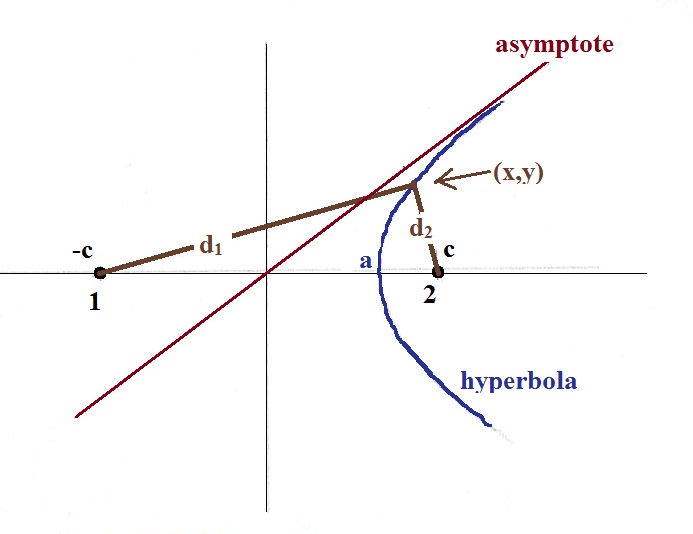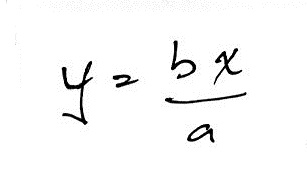Wednesday Apr. 29, 2015
Final Exam Question #6
The sensors in the National Lightning Detection Network use
measurements of the two perpendicular components of the horizontal
magnetic field radiated by a lightning discharge to determine a
bearing angle to the strike point. The location of a strike
could then be determined by finding the intersection of vectors
from as few as two stations (accuracy is better when vectors from
multiple stations are used).
The NLDN sensors also measure the time of arrival (TOA) of the
lightning signal at each sensor. TOA data serve as an
additional, independent, way of locating a lightning
discharge. In this case a single TOA difference measurement,
Δt, for a pair of stations isn't enough to locate a
strike. All you can say for a single TOA difference is that
the strike point was located somewhere on a hyperbola. This
is in fact the definition of a hyperbola: "the set of points in a
plane whose distance to fixed points in the plane have a constant
difference." The object of this problem is to demonstrate
the validity of that statement.
We'll consider the geometry shown below.
Sensors are located a Points 1 & 2 located at (-c, 0) and (+c,
0). The hyperbola crosses the x-axis at x = a. Point
(x, y) is just an arbitrary point on the hyperbola and is a
distance d1 from Point 1 and a distance d2
from Point 2. The values of d1 and d2
will change
depending on x and y but the difference d1- d2
will remain the same for any point on the hyperbola.

The problem has three parts:
(i) Show that d1- d2=
2a (hint: since d1- d2
remains constant, you can choose any point on the
hyperbola to determine d1- d2
)
(ii) Demonstrate that the expression above after
some manipulation leads to
(iii) Show that at large values of x and y the hyperbola
becomes a straight line




